
Four common misconceptions when choosing an underlay – and how to address them
A floor is only as strong as the surface it rests on. In practice, however, we often see the same misunderstandings arise when selecting an underlay. These misconceptions lead to complaints from end-users, unnecessary failure costs, and sometimes even loss of warranty. In this article, we discuss four frequent misconceptions – and how to solve them. This way, you ensure a durable, quiet, and safe floor construction that meets every client’s expectations.

1. Impact sound is not the same as airborne sound
What’s the difference?
- Impact sound: sound transmitted through the floor to the room below, such as footsteps or sliding chairs.
- Airborne sound: sound that travels through the air within the room itself, such as voices or music.
Why does this matter?
- Acoustic underlays generally reduce impact sound and, to a lesser extent, footfall noise.
- Misconceptions here lead to incorrect expectations and complaints.
How to fix it
- Combine a suitable underlay with wall or ceiling solutions for optimal acoustics.
- Inform the client in advance about the properties of the chosen floor build-up.

2. Confusing thickness with quality
Many project managers and installers believe that a thicker underlay is automatically better. However, that is a misconception. The quality of an underlay for hard floors is determined by its compressive strength (CS value) – not by its thickness.
Why is compressive strength crucial?
- A high CS value (kPa) prevents indentation and wear.
- Furniture or castor chairs exert continuous pressure.
- Too low a compressive strength can cause damage and loss of product warranty.
How to avoid this mistake?
-
- Always check the technical specifications and load capacity of the underlay.
- Choose an underlay that has been tested for castor chair load, especially in areas of heavy use.
- Don’t be misled by thickness: a thin, firm underlay can be better than a thick, soft one.
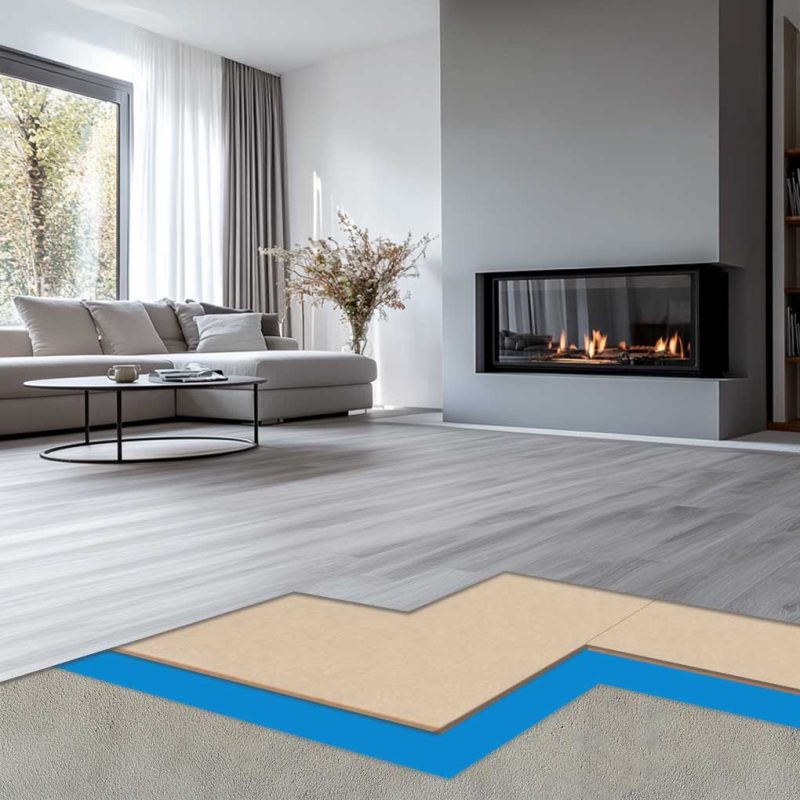
3. An underlay is not a substitute for levelling
Many people believe that an underlay automatically compensates for all irregularities. However, this does not apply in all situations – and certainly not for larger level differences.
Why is this a problem?
- An insufficiently levelled subfloor leads to visible unevenness.
- This can cause telegraphing.
- Wrong assumptions delay handover or increase remedial costs.
How to fix it?
- Use an underlay only within the tolerances for which it’s intended.
- For slight irregularities (up to 2–3 mm) a system like Floorfixx is effective:
-
- Levels slightly undulating floors.
- Immediately walkable, dry system.
- Ideal for fast renovation projects.
This way, you ensure the underlay does what it should – and you work smoothly towards an easy installation and handover.
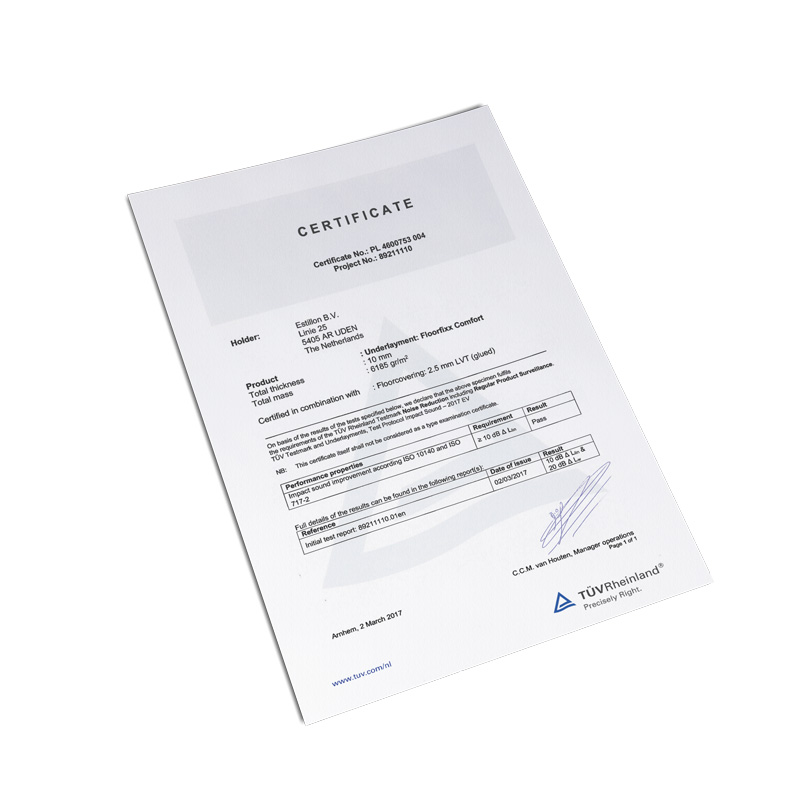
4. Forgetting or underestimating certificates
When selecting underlays, certification is often not taken into account. Yet quality marks and test results are essential to demonstrate performance.
Why certification matters:
- Our products have been extensively tested by independent institutions.
- Certificates reinforce the justification of quality and safety, giving you a stronger position in the market.
- Certification allows you to make clear agreements and avoid disputes with clients and end users.
- In specific sectors (such as maritime or sustainable construction), certificates provide access to projects and markets where they are a requirement.
Key certificates:
- TÜV certificate: sound-reducing underlays.
- Fire certificate: fire-retardant underlays.
- IMO certificate: required for maritime applications.
Practical tip:
By working with certified underlays, you give clients and end users demonstrable assurance – and avoid disputes at handover.
A well-chosen underlay reduces failure costs, ensures clarity at handover, and delivers satisfied users. Focus on more than just thickness: always check compressive strength, use smart solutions like Floorfixx where possible, and choose products with the right certification. This way, you lay a solid foundation under every floor – both literally and figuratively.
On our news page you will find the latest updates about Estillon, innovative developments in the field of subfloors and installation products, and inspiring projects we are working on. Whether you are a professional, distributor or project manager, we will keep you informed of relevant trends and news from the industry.
News

Bram Dierkes appointed as new Managing Director of Estillon
As of 1 April, Bram Dierkes is the Managing Director of Estillon. He succeeds Richard Bosveld and brings fresh energy, experience, and ambition for a forward-looking course.

Estillon celebrates 60 years of craftsmanship and innovation
Estillon turned 60, and we celebrated in style! Two days filled with pride, inspiration, good company, and a heartfelt farewell to Richard. Reflecting on the past and looking ahead – here's to the future!
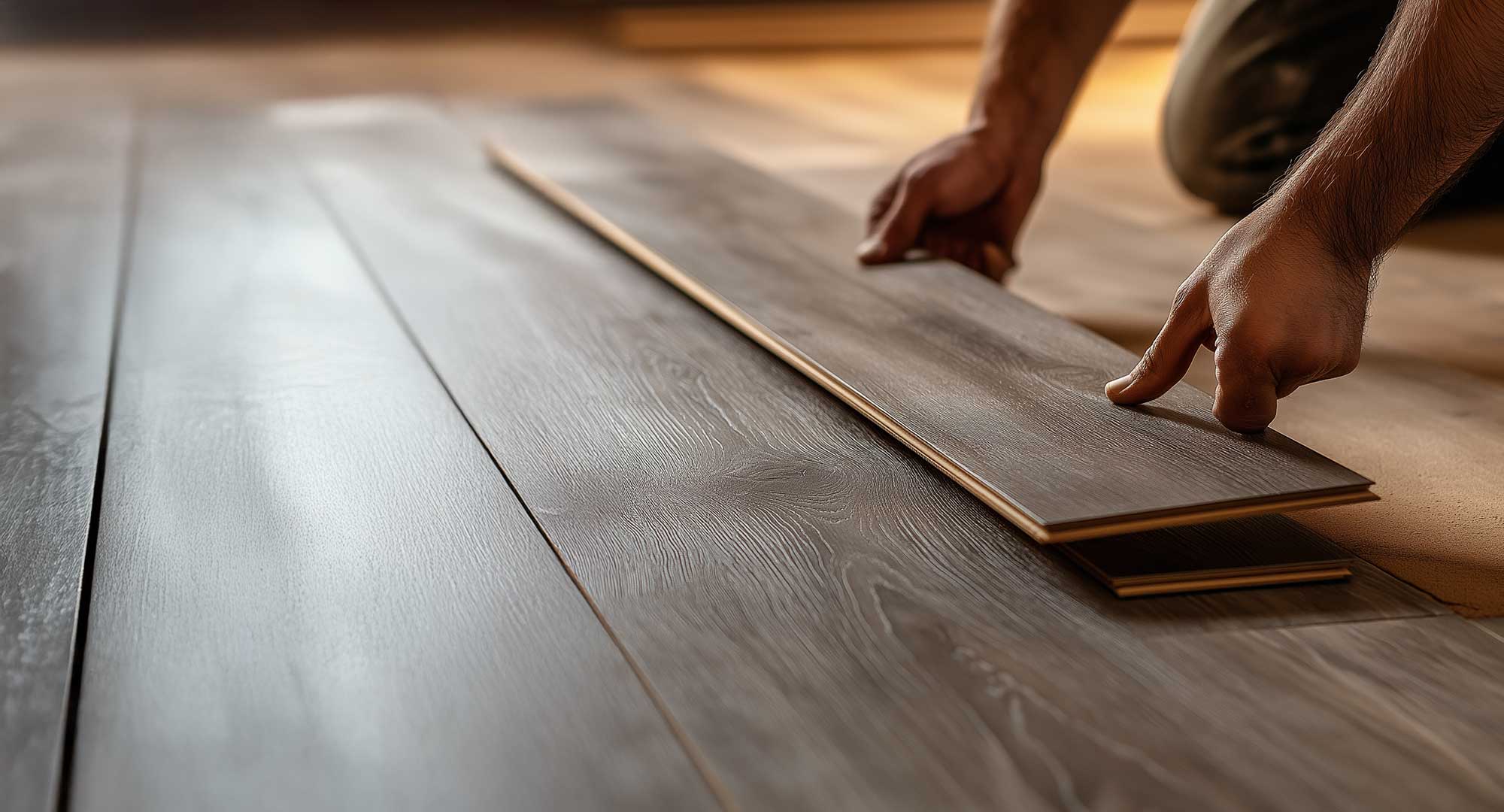
Fact or fiction? three common misunderstandings about underlays.
A good floor starts with the basics: the underlay. Yet there are persistent misunderstandings about the role and necessity of underlays. This can lead to wrong choices, with consequences for the lifespan, living comfort and even the warranty on the upper floor. Time to separate the facts from fiction!
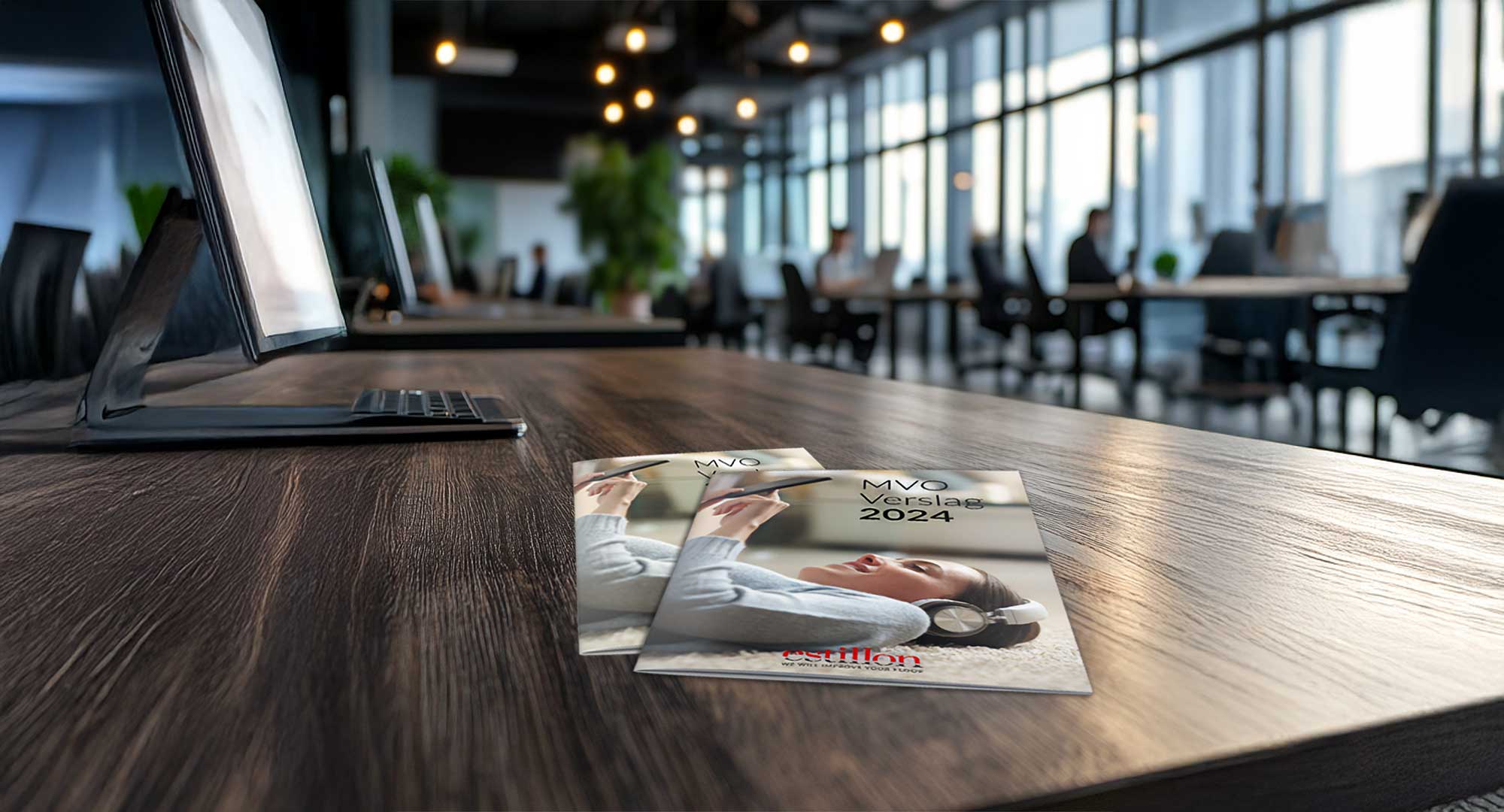
Working together for a greener future
Sustainability is not a trend, but a responsibility. At Estillon we commit ourselves every day to a better world by investing in people, planet, profit.
Do you want to discover how we designed our sustainable approach in 2024? Then read our CSR report.
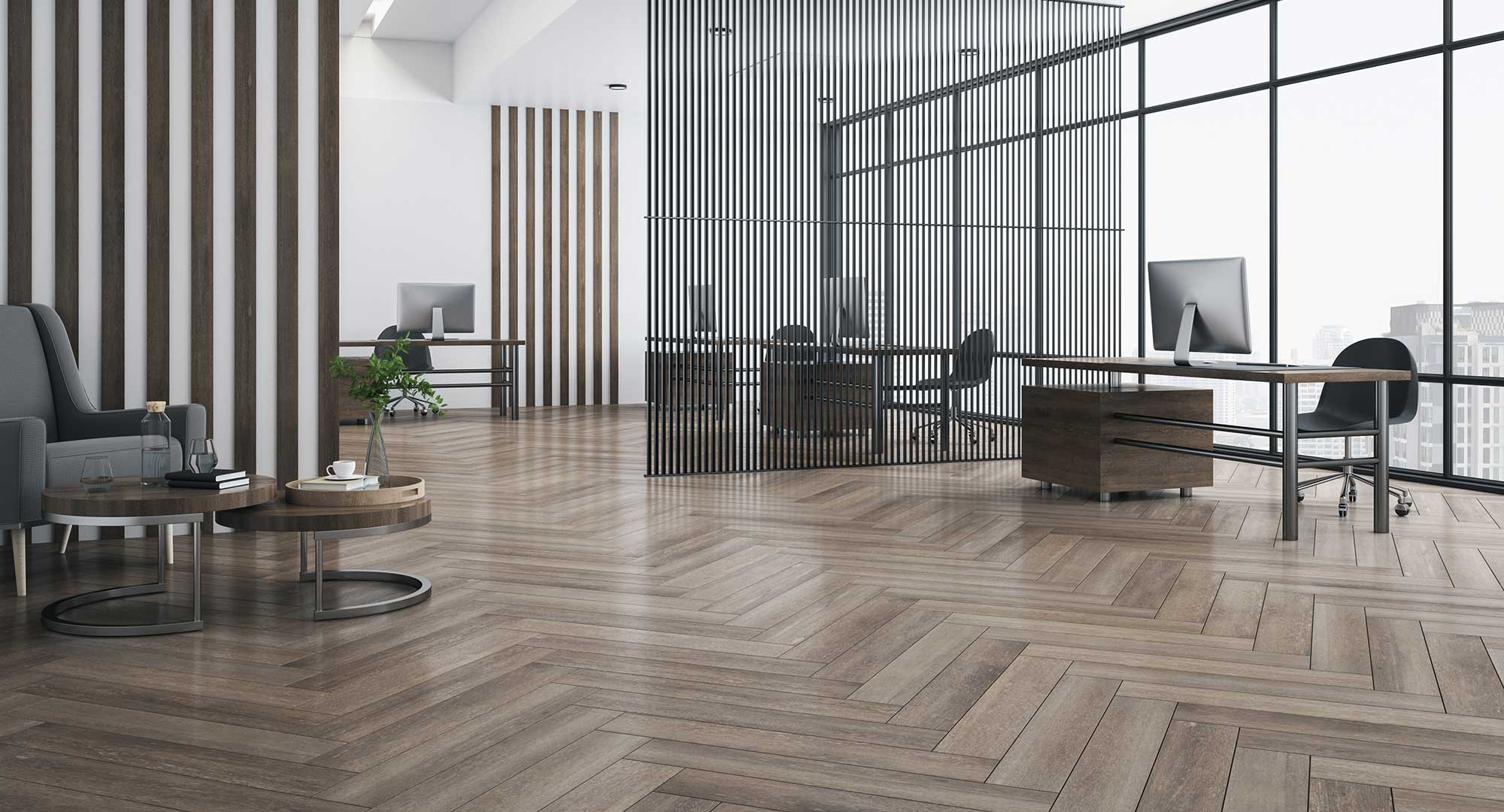
Solidbase Underlays: the solid basis for your floor
A good underlay is the basis for a comfortable, durable and quiet floor. Solidbase underlays combine stability, durability and sound insulation for LVT, laminate and parquet floors.

The Differences Between Delta Llin vs. Delta Lw
What Do ΔLw and ΔLlin Mean for Your Underlay? Discover the difference between these sound measurements and choose the right underlay for optimal living comfort! Read on to learn more.
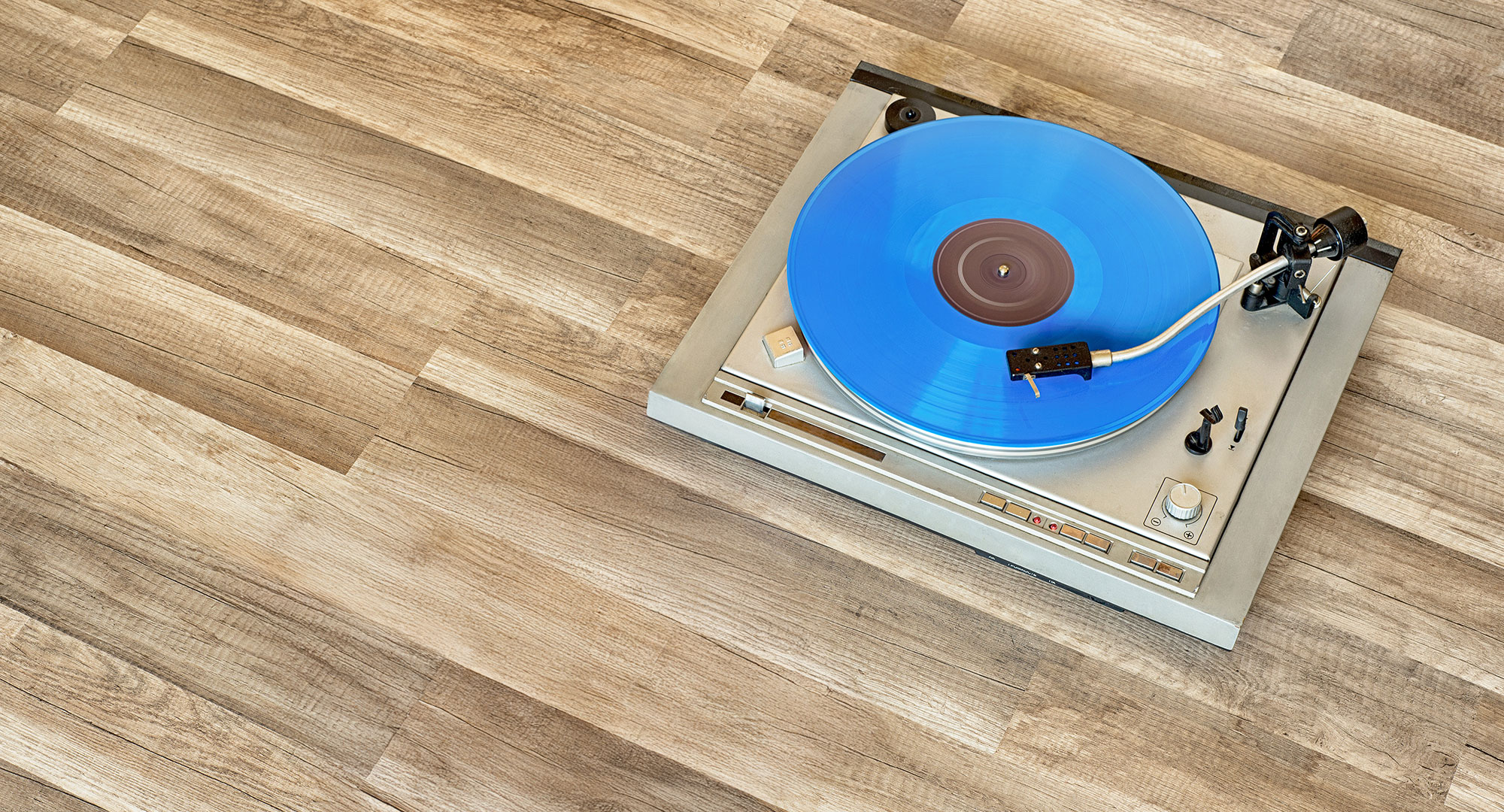
The 10 dB Standard for Underlays: What Does It Mean?
In the Netherlands, the 10 dB requirement for underlays is often applied to reduce impact noise. But why is this standard important, and how can you identify a suitable underlay? We’ll explain.
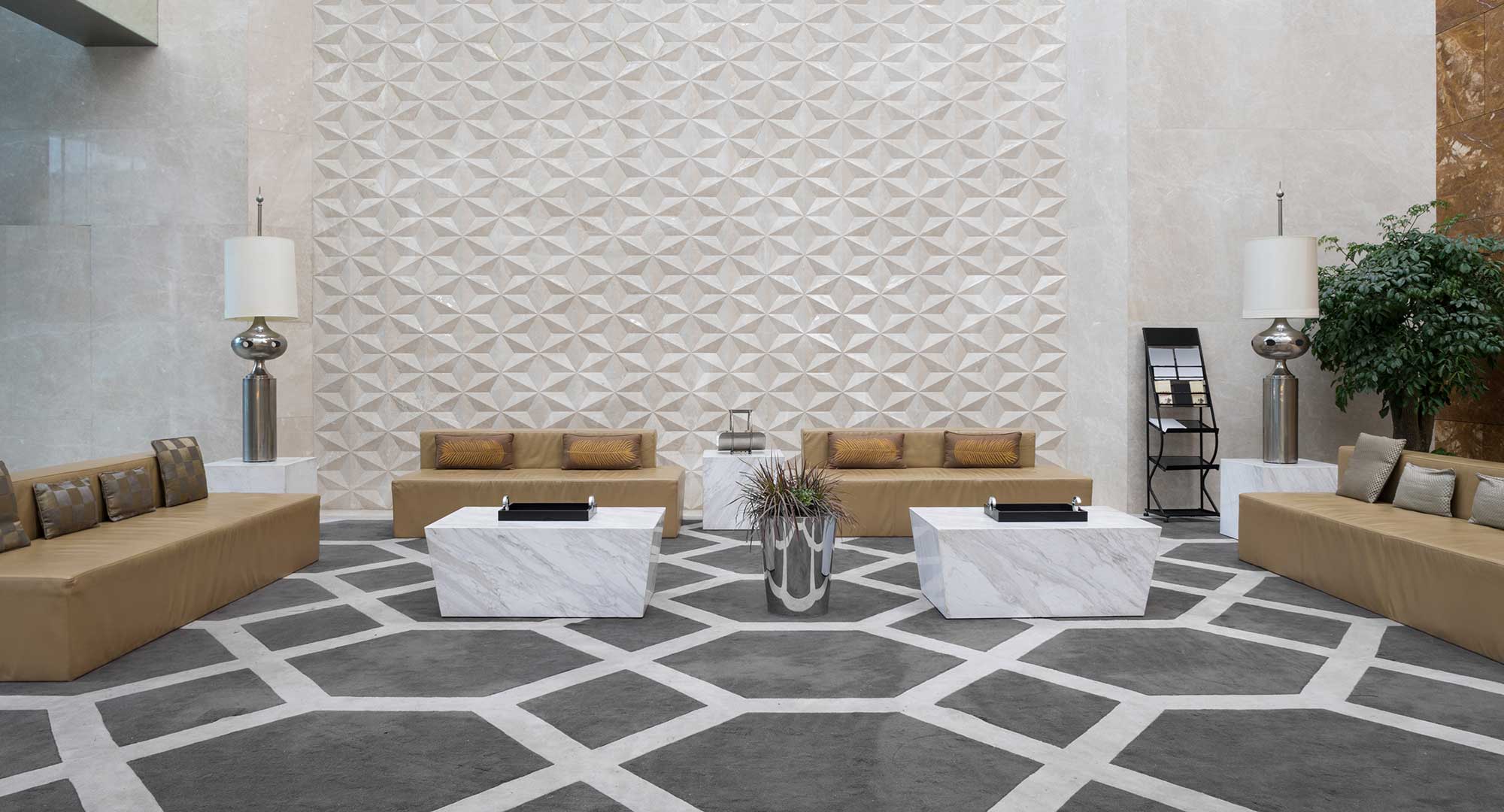
Top 5 Heat-Insulating Underlays
The demand for energy-saving solutions has surged. Did you know that heat-insulating underlays exist? Find out which ones are the best in our Top 5 Heat-Insulating Underlays.
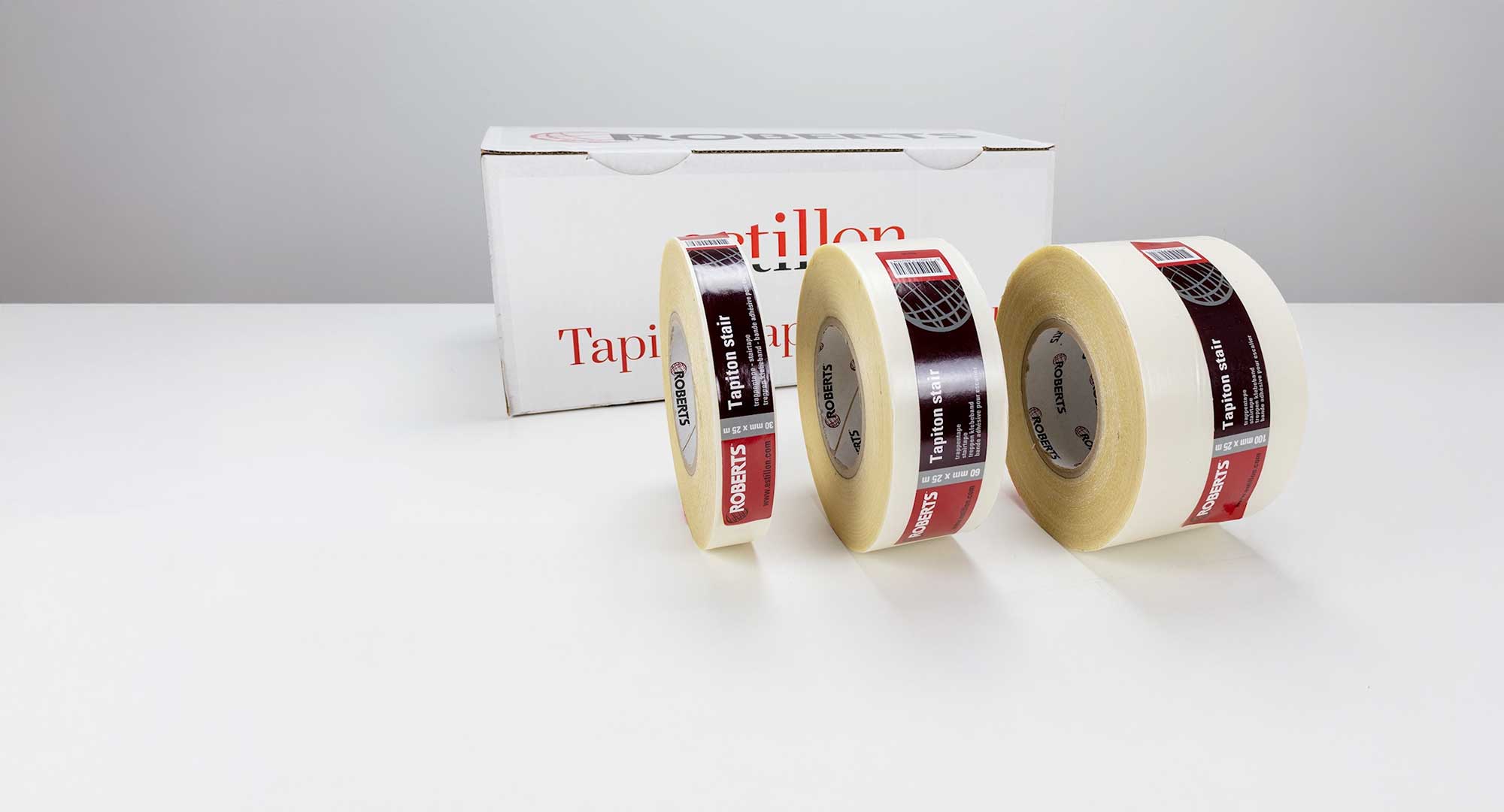
Which Tape is the Best Choice for Your Project?
Are you looking for the right tape for your specific application? In our extensive range, you’ll find the perfect tape for the most common uses.
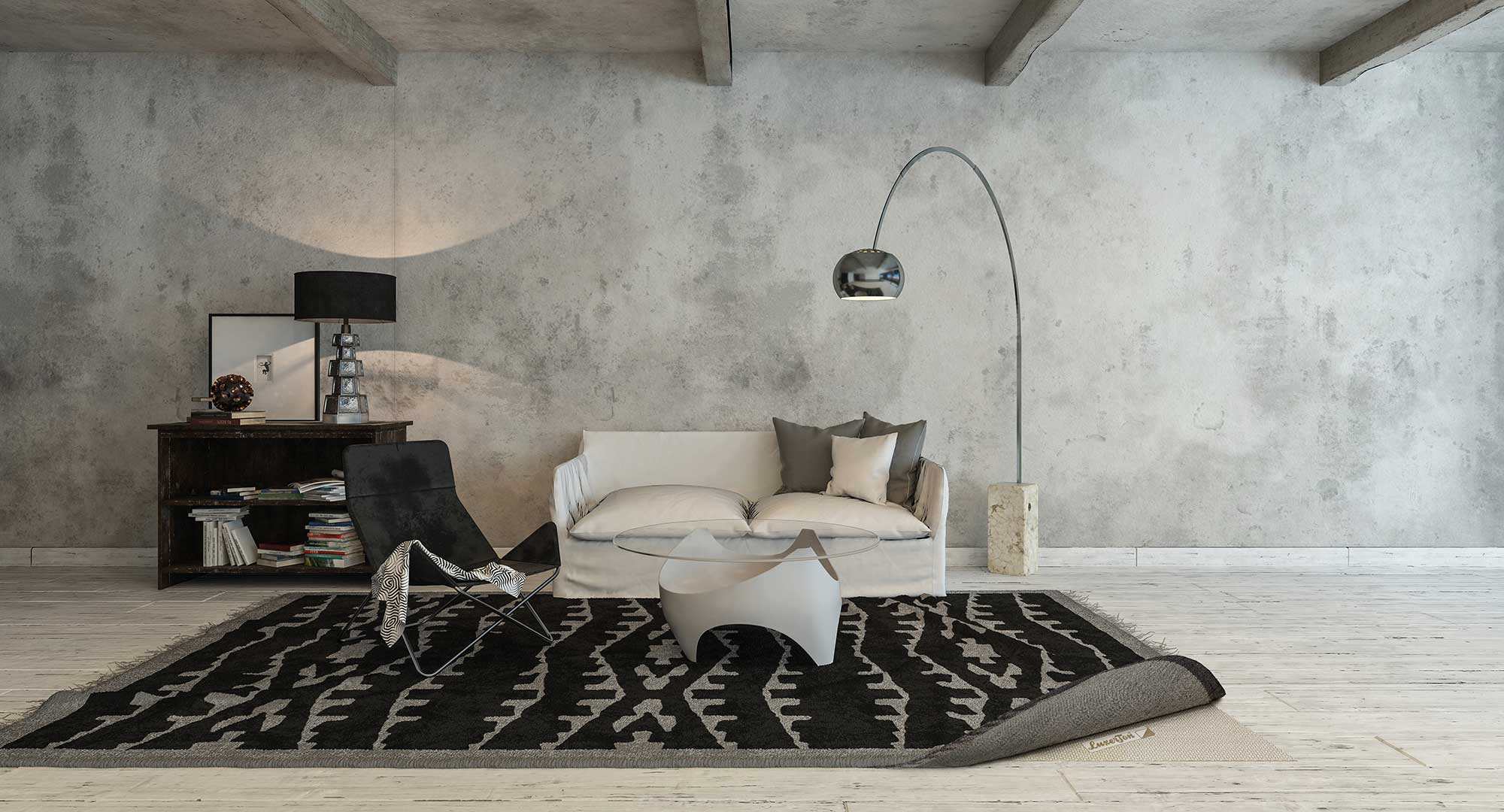
How to Choose the Best Anti-Slip Underlay
With Luxerton anti-slip underlay, your rug stays securely in place. Durable and 100% recyclable, available in four variants. Discover which type suits your floor best!
Search
No results found.